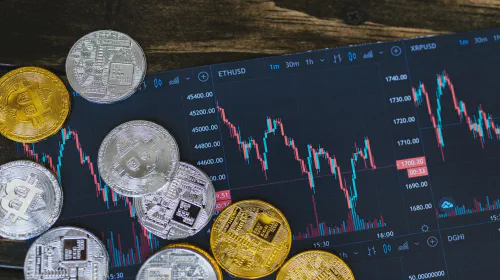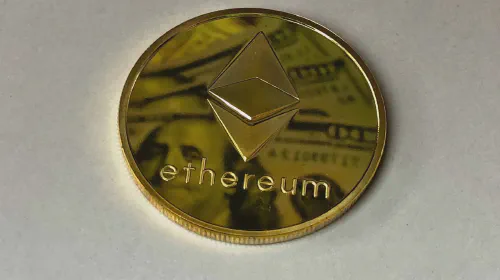Ethereum vs. Cardano - What's the Difference?
Salomon Kisters
Sep 30, 2022This post may contain affiliate links. If you use these links to buy something we may earn a commission. Thanks!
Those who are well versed in the world of cryptocurrency undoubtedly know about the Cardano vs. Ethereum debate. Ethereum and Cardano are frequently compared since both networks provide similar services, such as the execution of smart contracts and the creation of dApps (decentralized applications).
The main differences that set these cryptocurrencies apart are that Ethereum is older, exponentially bigger than Cardano, and uses the Proof-of-Work protocol, while Cardano is not as old as Ethereum, is much smaller in size, and uses the Proof-of-Stake protocol.
How Ethereum Differs from Cardano
ETH and ADA are two of the most well-known cryptocurrency projects today whose aim is to build the foundation for blockchain-based services and DAPPs. They are growing in popularity because building a project on ETH and ADA doesn’t require a central authority, like a bank or broker.
The main difference between Ethereum and Cardano is that the former has become a key part of decentralized finance. Cardano, on the other hand, is a newer technology that is being rolled out more slowly and carefully. It is still in the early stages of developing its features and user base.
Even though Ethereum and Cardano are two different technologies, they both come from the same source. Charles Hoskinson, who founded Cardano, was also one of the first people to work on Ethereum. Today, people can use both ETH and ADA for enacting peer-to-peer transactions while also using them to make payments for the services rendered and the computing power utilized in the process. Both are mostly used as short or long-term investments. People buy, store, or trade them when their value appreciates to make a profit and then repeat the process.
The Major Difference between Ethereum and Cardano
Ethereum and Cardano seem similar on the surface, but they have significant key operational and application differences. Their distinctive features include the following:
- Different Technology: For the time being, both Cardano and Ethereum operate on a distinct set of tech specs. Cardano is a cryptocurrency that uses a system called Proof-of-Stake. Therefore, it does not need the energy-intensive computing process known as mining, which is used by certain cryptocurrencies to reward those who help verify transactions in exchange for a small portion of those coins. Proof-of-Work blockchains, on the other hand, refer to cryptocurrencies that require miners to verify transactions, such as Bitcoin and (now) Ethereum. To validate the integrity of financial transactions and gain cryptocurrency incentives, Cardano users may participate in a process called crypto staking. Ethereum is now undergoing the switch to the Proof-of-Stake mechanism.
- Ethereum has a Higher Market Value: Ethereum has maintained its position as the second-most valued cryptocurrency, after Bitcoin, for the last several years. Despite its meteoric rise in value since its inception, Cardano is still only valued roughly at 10% of Ethereum’s overall market cap. One explanation for this is Ethereum’s widespread use in the cryptocurrency market. Typically, more than a million transactions are recorded every day on Ethereum. The average daily volume of Cardano transactions is roughly 100,000.
- Cardano is Still Incomplete: Ethereum is far more advanced in its distribution, although both projects are still actively being developed. Developers behind Cardano are still hard at work on developing its fundamental functionality, and the platform just recently debuted services like smart contracts, which run automatically under certain circumstances. Several years ago, Ethereum was the first to implement this innovation, which is why the cost of using Ethereum may be more than you expect. Occasionally, transaction costs in cryptocurrency’s autonomous economy using ETH have topped $20. Cardano’s transaction costs are often cheaper and have frequently been under $1 this year.
Understanding Ethereum
Ethereum is a virtual system that was developed in 2015. The platform’s native cryptocurrency is Ether and its programming language is called Solidity. Ethereum’s blockchain is far quicker than Bitcoin’s, which makes it easier to mine blocks. It’s not a limited cryptocurrency, either. However, much like Bitcoin’s blockchain, its verification of transactions and mining of blocks is based on a Proof-of-Work (PoW) system.
Ethereum is a decentralized application platform that may also be used as a means of exchange, much like Bitcoin. In addition, Ethereum functions as a distributed public ledger for authenticating and recording transactions on a blockchain. The network’s native cryptocurrency, Ether, may be used by its users to build, distribute, sell, and get access to a wide variety of applications. dApps is the insider term for the network’s decentralized applications.
To be able to use the platform’s contracts and apps, users must first acquire some Ether tokens. Ethereum allows users to build smart contracts, while the primary differentiating characteristic and competitive advantage of this blockchain are smart contract capabilities.
Understanding Cardano
Cardano was launched in 2017 as a blockchain platform. For this system, the cryptocurrency of choice is ADA, which uses Ouroboros, a Proof-of-Stake consensus system. The algorithm used to generate blocks and verify transactions is crucial to any blockchain network.
The protocol that powers this blockchain was developed to ensure that as little energy as possible is wasted during block generation. Cardano is designed to be a dApp development platform that supports many cryptocurrencies and has smart contracts that can be independently verified.
Comparing Ethereum and Cardano
With its positioning as an alternative to Ethereum, Cardano has gained traction over the years. Both systems aim to create a distributed and interconnected network and serve comparable purposes like smart contracts, and serve as the foundation for the creation of decentralized apps.
The algorithm used to generate blocks and verify transactions is crucial to any blockchain network. When comparing Cardano with Ethereum, it’s important to note that they employ separate blockchains. When it comes to Proof-of-Work blockchains, Ethereum’s is tried and true. To maintain the blockchain’s operations, a group of miners performs a series of complex computations. With Proof-of-Work, Ethereum can give its transaction mechanism a real-world value. The value of an Ether may be measured in terms of processing time.
Miners are replaced by validators in a Proof-of-Stake consensus like Cardano’s Ouroboros. Since Proof-of-Work systems need far more ‘work’ from miners to generate a block reward, Proof-of-Stake systems use significantly less energy and fewer resources for mining.
For Ouroboros to succeed, a critical mass of ADA holders must be online at all times with stable connections. This allows for the inexpensive and speedy verification of financial transactions. On PoW networks like Ethereum, the infrastructure load of rising expenses, energy utilization, and delayed transaction times hinder scalability, interoperability, and sustainability.
Ethereum 2.0 plans to switch from a Proof-of-Work to a Proof-of-Stake model because of the advantages offered by the latter. Being first to market is an advantage for Cardano, whereas Ethereum will have to play catch-up and need more time to become stable after the shift.
Key Notes for Cardano
Few things to keep in mind about Cardano:
- Ouroboros Consensus Protocol: Cardano’s Ouroboros protocol, developed during the company’s early stages, was the first of its kind to be shown to be completely safe. The early success is the reason why crypto users trusted the ADA coin system in such a short amount of time.
- Scholarly Academic Research: In contrast to other cryptocurrencies, Cardano’s evolution has been guided by rigorous academic research. Incorporating peer-reviewed ideas and evidence-based techniques, Cardano’s development stages are underpinned by a robust research-based framework. This provides a solid foundation for further development of the blockchain and the ADA coin in the future.
- Current Price: Both ETH and ADA are anticipated to appreciate in value as the decentralized application industry continues to expand.
Key Notes for ETH
Few things to keep in mind about Ethereum:
- Longevity: Ethereum is the third most valuable digital money at the moment. Smart contracts and other decentralized apps are also available on the network.
- Ethereum 2.0: Some issues with Ethereum’s PoW technology will be fixed in the upcoming 2.0 version. Ethereum’s value should rise as a result of this shift in the long run.
- Current Price: Both ETH and ADA are anticipated to appreciate in value as the decentralized application industry continues to expand.
Final Thoughts
Ethereum and Cardano both continue to prove useful and profitable for their users as they expand and introduce improvements to their existing systems every day. For the time being, the main distinction is that Cardano’s Proof-of-Stake Ouroboros consensus mechanism is more adaptable than Ethereum’s Proof-of-Work blockchain.
Stay informed with the latest insights in Crypto, Blockchain, and Cyber-Security! Subscribe to our newsletter now to receive exclusive updates, expert analyses, and current developments directly to your inbox. Don't miss the opportunity to expand your knowledge and stay up-to-date.
Love what you're reading? Subscribe for top stories in Crypto, Blockchain, and Cyber-Security. Stay informed with exclusive updates.
Please note that the Content may have been generated with the Help of AI. The editorial content of OriginStamp AG does not constitute a recommendation for investment or purchase advice. In principle, an investment can also lead to a total loss. Therefore, please seek advice before making an investment decision.

Can Algorand Be Like Ethereum, and Does It Have a Future?
Today, we will be closely looking at how Agorand compares with Ethereum and whether this new, emerging cryptocurrency has a prosperous future or not.

7 Reasons Why Ethereum Is Different From Bitcoin
In this article, we’ll look at the differences between Ethereum and Bitcoin and see where Ethereum improved upon its blockchain technology by learning from its predecessor.

Are Nfts Bad for the Environment?
Energy consumption is the main issue that people have with cryptocurrencies and NFTs. But how bad are NFTs for the environment after all?
Protect your documents
Your gateway to unforgeable data. Imprint the authenticity of your information with our blockchain timestamp